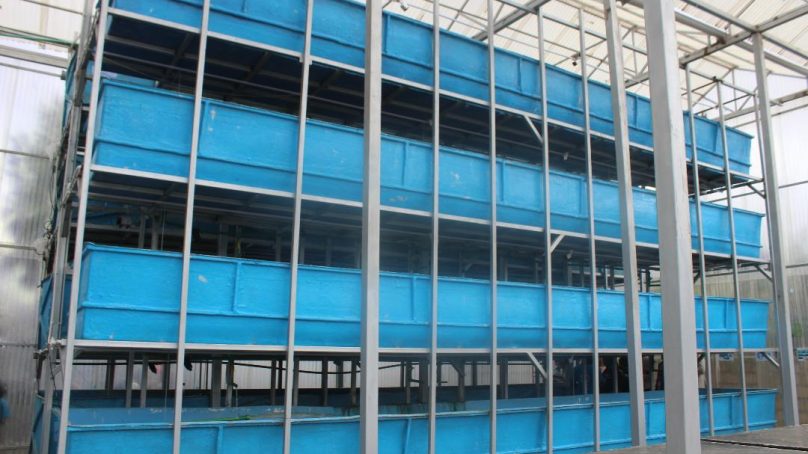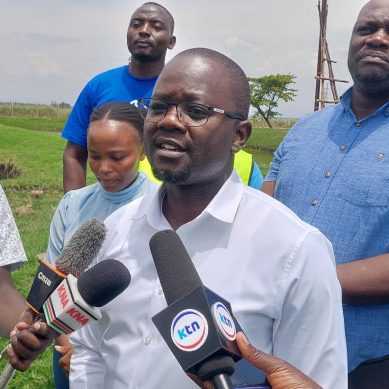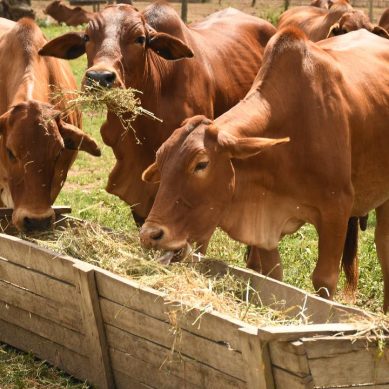
In the sun-scorched plains of Kajiado County, where rain is scarce and rivers are few, a quiet revolution is taking shape, for the good of the local people.
Here, tanks stacked toward the sky are giving birth to the world’s first Vertical Lake, an innovation proving that fish can flourish even where water barely flows.
The idea, pioneered by Kenyan innovator Jack Oyugi, reimagines how aquaculture can exist in arid regions. Instead of spreading water across large ponds, the Vertical Lake circulates it vertically through layers of tanks, mimicking the ecosystem of a natural lake but with almost no waste.
“We asked ourselves, if fish thrives in lakes, why not recreate that environment anywhere?” says Oyugi, co-founder of Vertical Lake Ltd. “So, we built our own lake, only this time, vertically.”
Each vertical lake unit is a compact tower of interconnected tanks, with water flowing from the top down through a gravity-powered biofiltration system that purifies and recycles it continuously.
“The water in our system has been in use for three years. We lose only about two per cent annually, and even that becomes Blue Harvest fertiliser,” Oyugi said.
Blue Harvest product, derived from fish by-products, is a nutrient-rich organic fertiliser that supports crop farming, creating a full sustainability cycle that benefits both land and water-based agriculture.
The concept was born out of necessity – a response to Kenya’s growing challenges of food insecurity and water scarcity in arid and semi-arid regions. Today, the Kajiado facility houses over 20,000 tilapias in a closed-loop, solar-powered system. Each tank can accommodate up to 10,000 fish, while the new prototypes aim to multiply that capacity.
The vertical model is 15 times more space-efficient than traditional ponds, an innovation that could reshape how Kenya, and the world, think about aquaculture. “This model is sustainable and scalable,” Oyugi says.
“We can literally grow our lakes upward. The sky is the limit”, he added.
At the core of the Vertical Lake is precision technology. Each unit is equipped with AI-driven sensors and cameras that monitor fish movement, oxygen levels and water chemistry in real time.
“If there’s stress, contamination or low oxygen, the system alerts us instantly,” Wendy explains Cynthia, Business Development Lead at Vertical Lake. That means better fish health, lower disease risk, and higher yields.”
The company’s commitment to organic and traceable aquaculture also sets it apart.
“Our fish are raised in controlled, pollutant-free environment,” Wendy adds. “We test our water daily to maintain purity and safety. Every fish can be traced back to its exact tank.”
Nothing goes to waste at the Vertical Lake. Fish waste becomes fertiliser while bones and skin are processed into bioplastic packaging and collagen-based products.
“Even what’s left behind adds value,” Wendy says. In just six to eight months, fish in the Vertical Lake reach market size, typically between 500 and 600 grams, using a fraction of the land and water required by conventional fish farms.
From a bold idea in Kenya’s drylands, the Vertical Lake is now emerging as a global model for sustainable aquaculture, one where innovation, ecology, and entrepreneurship flow together. As Oyugi puts it simply, “We stopped waiting for lakes to form and built one ourselves.”
- A Tell Media / KNA report / By Violet Otindo







